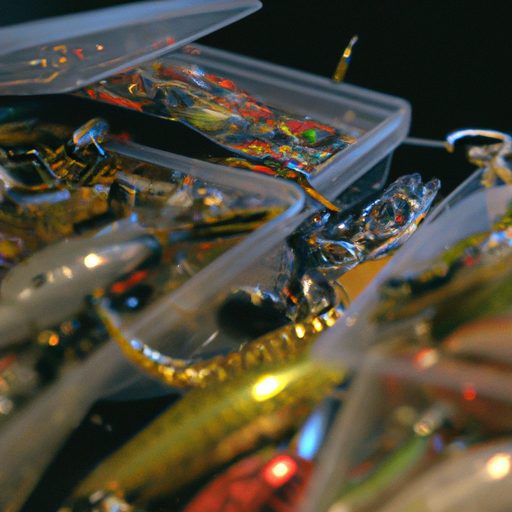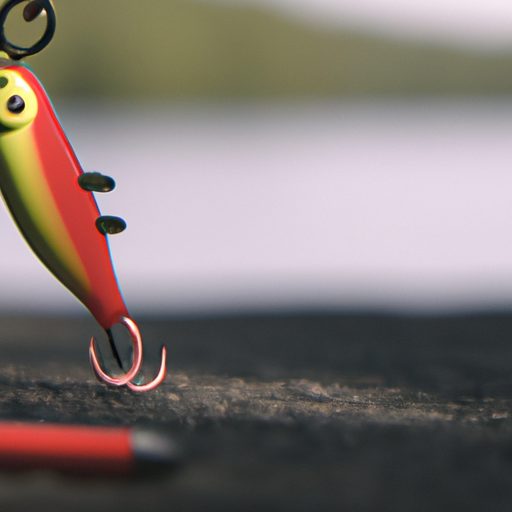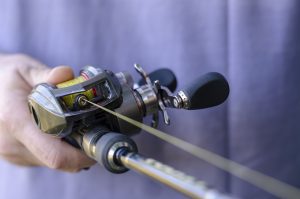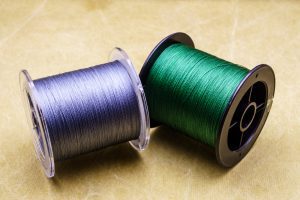“Catch the Big One with the Right Bait!”
Introduction
Fishing is a great way to relax and enjoy the outdoors. Whether you’re a beginner or an experienced angler, it’s important to know the best fishing baits for different types of fish and fishing conditions. Different types of fish have different preferences when it comes to bait, and the type of bait you use can make a big difference in your success. In this article, we’ll explore the best fishing baits for different types of fish and fishing conditions, so you can get the most out of your fishing trips.
The Benefits of Using Live Bait for Fishing Different Types of Fish
Using live bait for fishing is a popular and effective method for catching different types of fish. Live bait is a natural food source for fish, and it can be used to attract a variety of species. There are several benefits to using live bait for fishing, including increased success rates, improved presentation, and the ability to target specific species.
One of the main advantages of using live bait for fishing is the increased success rate. Live bait is more attractive to fish than artificial lures, and it is more likely to be taken by a fish. Live bait also has a more natural presentation, which can be more appealing to fish. Additionally, live bait can be used to target specific species of fish, as different types of bait will attract different types of fish.
Another benefit of using live bait for fishing is improved presentation. Live bait is more natural and lifelike than artificial lures, and it can be presented in a variety of ways. Live bait can be presented in a way that mimics the natural behavior of the target species, which can be more attractive to the fish. Additionally, live bait can be presented in a way that is more difficult for the fish to resist, such as by using a slow retrieve or by using a jigging motion.
Finally, using live bait for fishing can be used to target specific species of fish. Different types of bait will attract different types of fish, so anglers can use live bait to target the species they are after. For example, worms are a popular bait for catching panfish, while minnows are often used to target bass.
In conclusion, using live bait for fishing is a popular and effective method for catching different types of fish. Live bait is more attractive to fish than artificial lures, and it can be used to target specific species. Additionally, live bait has a more natural presentation, which can be more appealing to fish. For these reasons, using live bait for fishing can be a great way to increase success rates and target specific species of fish.
Exploring the Different Types of Artificial Baits and Their Benefits
Artificial baits are a popular choice among anglers, as they offer a variety of benefits over traditional live bait. Artificial baits come in a variety of shapes, sizes, and colors, and can be used to target a wide range of fish species. In this article, we will explore the different types of artificial baits and the benefits they offer.
Soft Plastic Baits are one of the most popular types of artificial baits. These baits are made from soft, pliable plastic and come in a variety of shapes, sizes, and colors. Soft plastic baits are designed to mimic the movements of live bait, making them attractive to fish. They are also durable and can be used multiple times, making them a cost-effective option.
Spinnerbaits are another type of artificial bait. These baits feature a metal blade that spins in the water, creating vibrations that attract fish. Spinnerbaits come in a variety of colors and sizes, and can be used to target a wide range of fish species.
Jigs are another type of artificial bait. These baits feature a weighted head and a soft plastic body. Jigs are designed to mimic the movements of live bait, making them attractive to fish. They are also durable and can be used multiple times, making them a cost-effective option.
Crankbaits are another type of artificial bait. These baits feature a hard plastic body and a lip that creates a wobbling action when retrieved. Crankbaits come in a variety of colors and sizes, and can be used to target a wide range of fish species.
Artificial baits offer a variety of benefits over traditional live bait. They are more durable and can be used multiple times, making them a cost-effective option. They also come in a variety of shapes, sizes, and colors, allowing anglers to target a wide range of fish species. Finally, artificial baits are designed to mimic the movements of live bait, making them attractive to fish.
In conclusion, artificial baits offer a variety of benefits over traditional live bait. They are more durable, come in a variety of shapes, sizes, and colors, and are designed to mimic the movements of live bait. For these reasons, artificial baits are a popular choice among anglers.
How to Choose the Best Fishing Bait for Different Types of Fish

Fishing is a popular pastime that can be enjoyed by people of all ages. Knowing how to choose the best bait for different types of fish is essential for a successful fishing trip. Different types of fish require different types of bait, and understanding the preferences of the fish you are targeting can help you catch more fish.
For freshwater fish, live bait is often the best choice. Worms, minnows, and crickets are all popular choices for freshwater fishing. These baits are attractive to many types of fish, including bass, catfish, and panfish. Artificial lures, such as spinners and crankbaits, can also be effective for freshwater fishing.
Saltwater fish are often attracted to natural baits, such as shrimp, squid, and crabs. These baits are often more effective than artificial lures, as they are more realistic and can be scented to attract fish. Live bait is also a popular choice for saltwater fishing, as many species of fish are attracted to the movement of live bait.
Fly fishing requires a different type of bait. Artificial flies, which are designed to imitate the appearance and movement of insects, are the most popular choice for fly fishing. These flies come in a variety of colors and sizes, and can be used to target a variety of fish species.
Choosing the right bait for the type of fish you are targeting is essential for a successful fishing trip. Knowing the preferences of the fish you are targeting can help you choose the best bait for the job. With the right bait, you can increase your chances of catching more fish.
Tips for Fishing in Different Conditions and Finding the Right Bait
Fishing is a popular pastime that can be enjoyed in a variety of conditions. To ensure a successful fishing trip, it is important to understand the different conditions and how they affect the type of bait that should be used.
When fishing in cold water, it is important to use bait that is slow-moving and has a strong scent. Cold water slows the metabolism of fish, so they are less likely to be attracted to fast-moving bait. Examples of good bait for cold water include worms, shrimp, and minnows.
In warm water, the metabolism of fish is faster, so they are more likely to be attracted to fast-moving bait. Examples of good bait for warm water include crankbaits, spinnerbaits, and jigs.
When fishing in murky water, it is important to use bait that is brightly colored and has a strong scent. Fish rely on their sense of smell to locate food in murky water, so it is important to use bait that has a strong scent. Examples of good bait for murky water include worms, shrimp, and minnows.
When fishing in clear water, it is important to use bait that is natural-looking and has a subtle scent. Fish rely on their sense of sight to locate food in clear water, so it is important to use bait that looks natural. Examples of good bait for clear water include crankbaits, spinnerbaits, and jigs.
When fishing in shallow water, it is important to use bait that is small and has a subtle scent. Fish in shallow water are more likely to be spooked by large bait, so it is important to use bait that is small and has a subtle scent. Examples of good bait for shallow water include worms, shrimp, and minnows.
By understanding the different conditions and selecting the right bait, anglers can ensure a successful fishing trip.
The Pros and Cons of Using Natural Baits for Fishing Different Types of Fish
The use of natural baits for fishing different types of fish is a popular and effective method of angling. Natural baits can be used to target a variety of species, from panfish to large game fish. While there are many advantages to using natural baits, there are also some drawbacks that should be considered before deciding to use them.
One of the primary advantages of using natural baits is that they are often more attractive to fish than artificial lures. Fish are naturally attracted to the smell and taste of natural baits, making them more likely to take the bait. Natural baits also provide a more realistic presentation, which can be especially effective when targeting wary fish.
Another advantage of using natural baits is that they are often more durable than artificial lures. Natural baits can withstand the rigors of being cast and retrieved multiple times, making them a good choice for anglers who are looking for a bait that will last.
However, there are also some drawbacks to using natural baits. One of the primary disadvantages is that they can be more expensive than artificial lures. Natural baits can also be more difficult to find, as they are often seasonal and can be hard to come by in certain areas. Additionally, natural baits can be more difficult to use than artificial lures, as they require more skill and knowledge to properly present.
In conclusion, the use of natural baits for fishing different types of fish can be an effective and rewarding method of angling. While there are some drawbacks to using natural baits, the advantages often outweigh the disadvantages. Anglers should consider the pros and cons of using natural baits before deciding to use them.
Conclusion
Exploring the best fishing baits for different types of fish and fishing conditions is an important part of successful fishing. Different types of fish require different baits, and different fishing conditions require different baits as well. Knowing which bait to use in which situation can make a big difference in the success of a fishing trip. With the right knowledge and the right bait, anglers can have a successful and enjoyable fishing experience.



